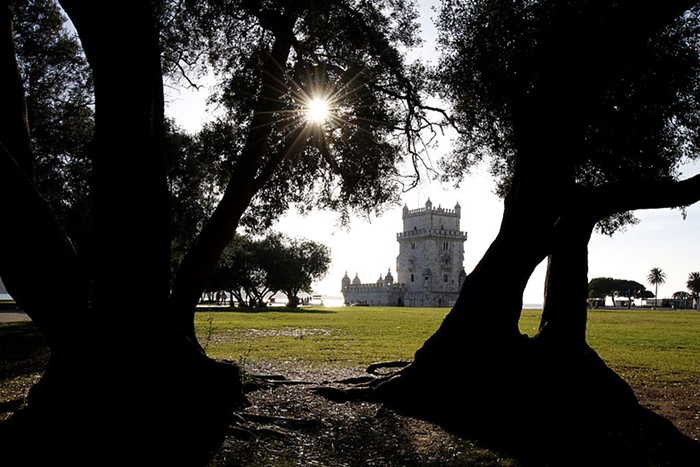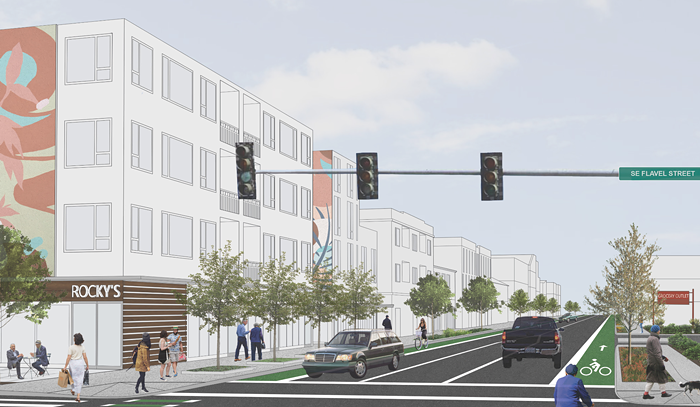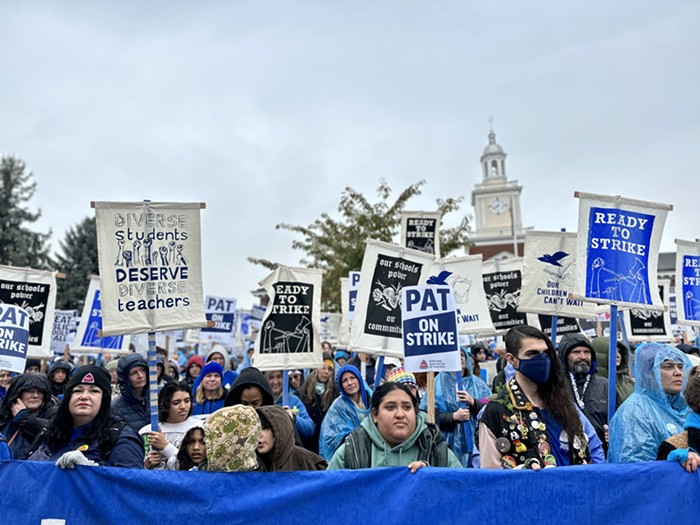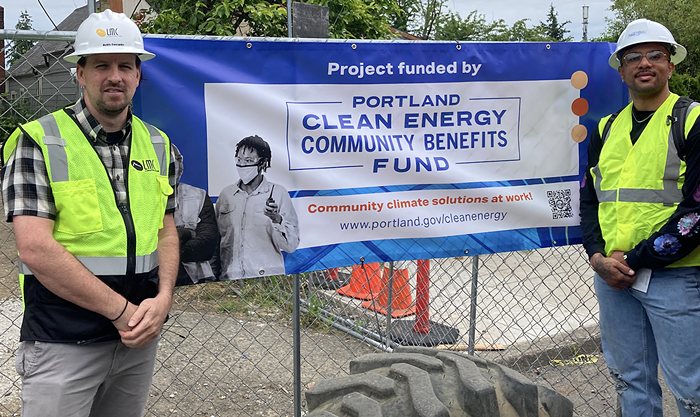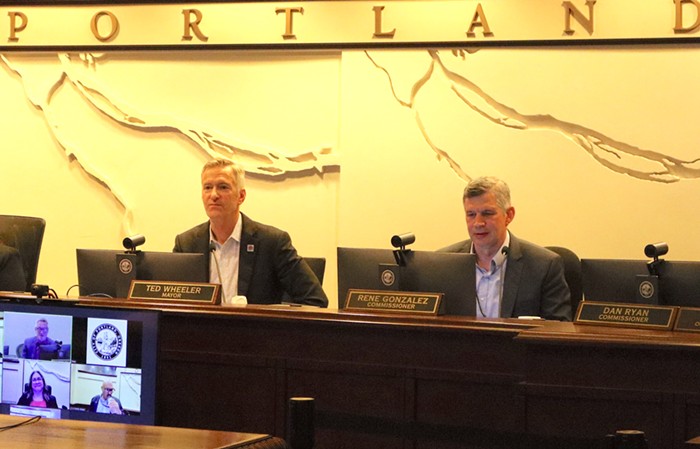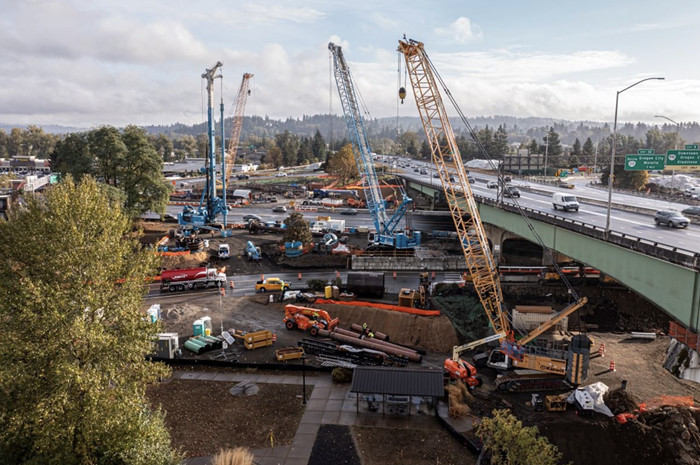ROWS OF CANDLES were still burning, condolences were still being scribbled on a wall, and somber young people were still mourning Monday afternoon at a makeshift memorial for 17-year-old Quanice Hayes.
“We all loved Quanice,” said one young woman, trying to make sense of what had led to a Portland police officer fatally shooting Hayes four days earlier near NE 82nd and Hancock, less than a block away.
The night before, about 100 people had gathered in the same spot where the young woman now spoke. At the vigil, Hayes’ mother, Venus, reflected on her son’s unique sense of style, his “vivacious, outgoing, and loving soul,” and how his four younger siblings idolized him. “We are all struggling to find the sense in his death and are mourning the loss of a life taken too soon,” she said, surrounded and embraced by teary-eyed family members.
The Portland Police Bureau (PPB) says Hayes, who had been listed in a state-run missing persons database since November, matched the description of an armed robbery suspect—a young black male wearing a dark hooded sweatshirt and jeans—that was reported near an 82nd Avenue motel just after 7 am on Thursday, February 9.
About two hours after that robbery, Police Officer Andrew Hearst shot Hayes three times—not long after police say someone called 911 to report a car prowler at the nearby Banfield Pet Hospital, in addition to what police say was a potential break-in at a house on NE Hancock, very near where Hayes was killed. A replica handgun was found near his body, cops say.
Hayes’ death was Portland’s first police shooting of the year, but it wasn’t the only one last Thursday.
Ten hours after the teen’s death, two Portland police officers shot and wounded a 56-year-old homeless man named Don Perkins in Southeast Portland. Perkins, police said, called 911 and reported he was suicidal and taking pills. After cops found him near SE 22nd and Lafayette, Perkins got out of his car “and had an encounter with the officers that resulted in two officers firing shots that struck him,” according to the PPB.
Officers Roger Walsh and Bradley Clark fired about eight times, according to a witness’ video footage obtained by the Oregonian. Perkins survived, and was taken to the hospital.
Once again, the PPB said, a replica handgun was found at the scene. The bureau has not said if the fake guns—which photographs suggest resemble actual handguns—were pointed at the police officers in either incident.
“It would be extremely difficult for anybody at a moment’s notice to know they are not actual firearms,” said Police Chief Mike Marshman on Friday.
While many facts have yet to be released, the shootings of Perkins and Hayes stir up two major issues.
Perkins, who was experiencing mental health issues, was shot in the midst of the city’s settlement agreement with the United States Department of Justice, which found in 2012 that the PPB repeatedly engaged in unconstitutional use of force against people with mental illnesses.
And while Hayes was the first black person killed by a PPB officer in nearly seven years—Keaton Otis and Aaron Campbell were both killed in 2010—evidence and accusations of racially biased law enforcement, along with prominent incidents of killings by police officers nationally, weighs heavily on the local African American and police watchdog communities.
“Anytime there is an officer-involved shooting, that’s concerning,” Portland Mayor Ted Wheeler said at a press conference on Friday, a day after the first police shootings in his tenure as police commissioner. “And when the person who is killed is a black teenager, it touches on deep historical wounds. We can’t sit here today and ignore what’s happened across our country.”
Not everyone’s buying it.
“I don’t trust none of that stuff,” Don’t Shoot Portland leader Teressa Raiford says of the PPB’s public response to Hayes’ death, which vowed that “the bureau will conduct an internal review” of the shooting. Raiford expressed skepticism that the bureau would properly review itself, and dismissed Wheeler’s acknowledgement of “deep historical wounds” as, essentially, superficial window dressing for a bureau she believes will clear the officer of wrongdoing, regardless of what happened. “Portland is already known for racism against people of color,” she said.
Officer Hearst, who killed Hayes, was one of three Portland cops who, in 2013, shot and killed a 50-year-old homeless man named Merle Hatch. Hatch rushed officers with a phone handset police believed was a gun while having a mental health crisis outside of a local hospital. A grand jury cleared the three officers.
Officer Clark, one of the officers who shot Perkins, shot a machete-wielding man named Marcus Lagozzino in 2010. Lagozzino, 34 at the time, also survived.
For now, the three officers who fired their guns on Thursday are on paid administrative leave while the shootings are under investigation, as is standard procedure. A grand jury will investigate if they’re legally liable, and a police board will determine if the shootings were within bureau policy.
